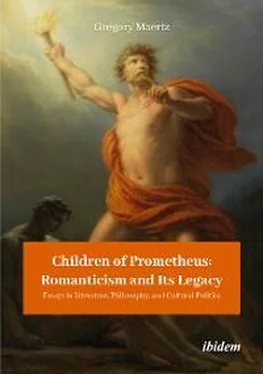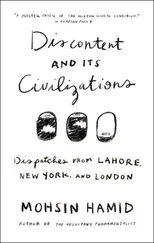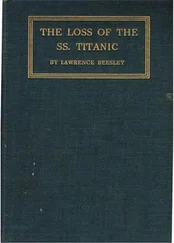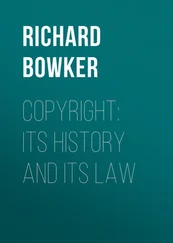Kierkegaard defines the “absurd” as “not one of the factors which can be discriminated within the proper compass of the understanding.” It is a mystery. And the mystery of faith is comprehended in the paradox that “with God all things are possible.” 11Browne is aware that the intoxicating anthropomorphism of Parmenides, who taught that “man is the measure of all things,” blinds us to God’s omnipotence. “We doe,” Browne scolds the reader, “too narrowly define the power of God, restraining it to our capacities.” (28) Indeed, “our understanding,” in Browne’s epistemology, “is dimmer than Moses’s Eye.” (14) Unwavering faith is impossible without first submitting reason to rigorous discipline. In Section 10 of Religio Medici Browne describes the reinforcement of faith as the process of taming the unruly flights of reason: “For by acquainting our reason how unable it is to display the visible and obvious effects of nature, it becomes more humble and submissive unto the subtleties of faith; and thus I teach my haggard and unreclaimed reason to stoope into the lure of faith.” (12) Browne does not believe in what is believable to his senses. He believes in the apparently preposterous. According to him, it is “no vulgar part of faith, to believe a thing not only above, but contrary to reason and against the arguments of our proper senses.” (12) And it is his believing itself that becomes believable in the act of worship. In a different sense from that which is cited by his critics, like John Addington Symonds, Browne’s ideas are utterly false. This sense of falsity is, however, not derogatory. There is a kind of falseness which, quite legitimately, affords the most refined aesthetic pleasure: it is enjoyed at that point where consistently sustained belief in the absurd assumes the semblance of spontaneity, and the most elaborate magical procedure, Browne’s prose style, conjures the appearance of the naively miraculous.
1Quoted by Austin Warren, “The Style of Sir Thomas Browne,” Kenyon Review (13): 674–687 (678).
2Norton R. Tempest, “Rhythm in the Prose of Sir Thomas Browne,” Review of English Studies (3): 308–318 (318).
3The latter is William K. Wimsatt, the former is Marshall McLuhan.
4Sir Thomas Browne, Religio Medici (New York: Collier, 1909), The Harvard Classics, Vol. 4, 3–4. Hereafter intra-textual references are to this edition.
5Paul Elmer More’s description of the “esemplastic power” of Samuel Taylor Coleridge’s imagination, in Shelburne Essays, Studies of Religious Dualism, Sixth Series (Boston and New York: Houghton Mifflin Company/The Riverside Press Cambridge, 1909), 167.
6W.P. Dunn, Sir Thomas Browne: A Study in Religious Philosophy (Minneapolis: University of Minnesota Press, 1950), 46.
7Quoted by Robert Sencourt, Outflying Philosophy: A Literary Study of the Religious Element (London: Simpkin, Marshall, Hamilton, Kent & Co., 1923), 250.
8Edward Dowden, Puritan and Anglican: Studies in Literature (New York: Henry Holt and Company, 1901, 2nd ed.,), 46.
9Søren Kierkegaard, Fear and Trembling and the Sickness Unto Death . Trans. Walter Lowrie (Princeton: Princeton UP, rev. ed., 2013), 59.
10 Ibid ., 47.
11 Ibid ., 67.
2 Intertextual Dialogue: Father and Daughter Novelists
“A new species would bless me as its creator and source; many happy and excellent natures would owe their being to me. No father could claim the gratitude of his child so completely as I should deserve theirs.”
Mary Shelley, Frankenstein, or the Modern Prometheus
“The importance of struggling with another’s discourse, its influence in the history of an individual’s coming to ideological consciousness, is enormous. One’s own discourse and one’s own voice, although born of another or dynamically stimulated by another, will sooner or later begin to liberate themselves from the authority of the other’s discourse.”
Mikhail Bakhtin, “Discourse in the Novel”
A brief survey of literary history in the late eighteenth and early nineteenth centuries yields several prominent examples of intertextual dialogue: James Boswell’s Life of Samuel Johnson (1791), the collaboration of Johann Wolfgang von Goethe (1749–1832) with Friedrich Schiller (1759–1805) in the journals Die Horen (1795–1797) and Musenalmanach (1796–1800) and then again with C.M. Wieland (1733–1813) in Taschenbuch auf das Jahr 1804, and Samuel Taylor Coleridge’s controversial appropriations of German sources in Biographia Literaria (1817). Dialogue in these works reflects a process fraught with more complexity than the term usually implies, since the emergence of each new text presupposes a struggle with more authoritative discourse. There are enough additional examples, such as the Schlegel-Tieck translation of Shakespeare (1797–1801, 1810), William Wordsworth and Coleridge’s Lyrical Ballads (1798), and J.P. Eckermann’s Gespräche mit Goethe (1836–48), to suggest that intertextual dialogue is one of the paradigmatic modes of Romanticism. These examples also illustrate Mikhail Bakhtin’s characterization of literary history as “an arena of struggle constantly being waged . . . against various kinds and degrees of authority”: the young Schiller and the amanuensis Johann Peter Eckermann (1792–1854) with Goethe, Boswell with Johnson, the “Great Cham,” Coleridge (1772–1834) with Immanuel Kant (1724–1804) and F.W.J. Schelling (1775–1854), and the translators Friedrich Schlegel (1772–1829) and Ludwig Tieck (1773–1853) with the works of William Shakespeare. 1
For Bakhtin the generic locus of this struggle is the novel and an intertextual dialogue that exemplifies the effort to achieve individuated discourse during the Romantic Period is exemplified by Mary Shelley’s Frankenstein, or the Modern Prometheus (1818) and William Godwin’s St. Leon: A Tale of the Sixteenth Century (1799). The intertextual ligatures connecting these texts have previously been acknowledged, but never fully revealed. 2The present discussion is built on this previously unvisited site and is intended to satisfy two objectives: first, to suggest that St. Leon is the primary precursor text with which Shelley engaged in intertextual dialogue during the composition of Frankenstein; and secondly, as a re-writing of Godwin’s novel, Frankenstein illustrates the dialogic progression from Shelley’s appropriation of her father’s discourse to the emergence of her own authorial originality. Seen from this perspective, the novel functions as an allegory of its author’s education and literary apprenticeship. Moreover, intertextual dialogue between Frankenstein and St. Leon imposes a slight modification on Harold Bloom’s paradigm of influence. Here, and in some of the examples named above, the “strong precursor” with whom the “ephebe” grapples is not a poet of the past but a near contemporary. As the product of intertextual dialogue, Shelley’s novel embodies the female child’s quest for independence from patriarchal authority, but the act of asserting her independence is made problematic in this case by the fact that her “strong precursor” is not merely a near contemporary but her own father. Partially orphaned and then alienated by a stepmother whom she saw as a rival for her father’s attention, Shelley’s attachment to her father was perhaps also afflicted by a trace of culpability for her mother’s death in childbirth. 3
Following Wollstonecraft’s death in 1797, Godwin was left to care for their infant daughter and the three-year old Fanny Imlay. At this time he began to work on St. Leon, and the new novel, which anticipates the interest in history and the historical accuracy of his Life of Chaucer (1803) and History of the Commonwealth of England (1824–28), examines what Godwin described a few years before as “the evils which arise out of the present system of civilized society,” and he considered the novel’s publication an effort to “disengage the minds of men from prepossession, and launch them upon the sea of moral and political inquiry.” 4Thus St. Leon resumes the critique of “things as they are” that commenced with An Enquiry Concerning Political Justice (1793) and was continued in Caleb Williams (1794) and, like the previous novel, St. Leon was intended to make Godwin’s political teachings more widely accessible. In particular, the new novel reveals the extent to which Godwin’s views on marriage had been modified under the tutelage of Wollstonecraft; in fact, even friendly critics charged that he had recanted his revolutionary views on relationships between the sexes. (He concedes this point in the novel’s Preface: “I apprehend domestic and private affections inseparable from the nature of man, and from what may be styled the culture of the heart, and am fully persuaded that they are not incompatible with a profound and active sense of justice in the mind that cherishes them.”) 5Scattered throughout the text, variations of this view contradict Godwin’s memorable description of marriage given in Book VIII of Political Justice (1793) as “the worst of all monopolies.” 6And yet, the revised argument presented in St. Leon, which accommodates bourgeois family life, is but another example of the intertextual dialogue conducted between Political Justice and Godwin’s prose fiction: the later texts suggest modifications to the ideology set down in the philosophical treatise.
Читать дальше












